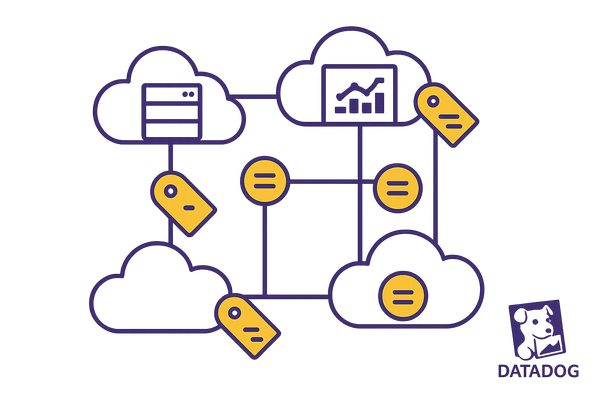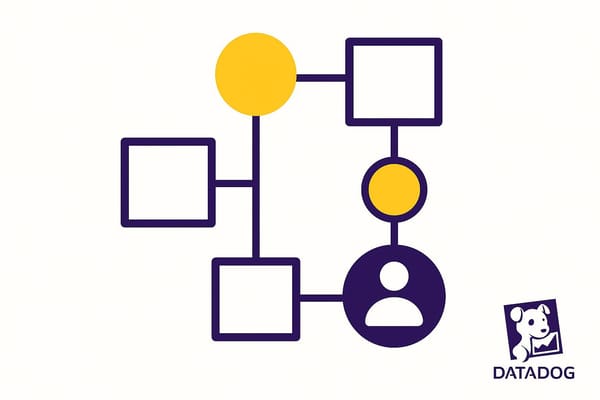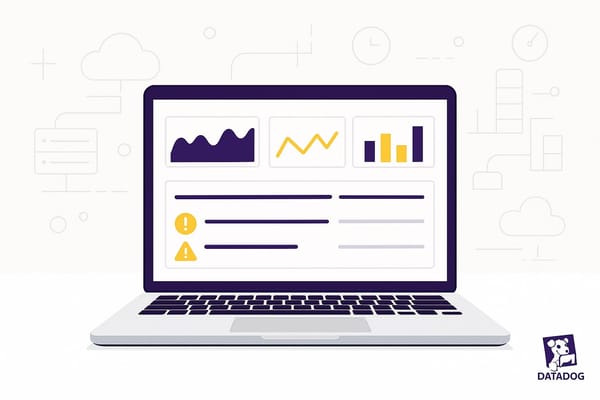Datadog Cost: The Complete Guide to Pricing, Charges, and ROI
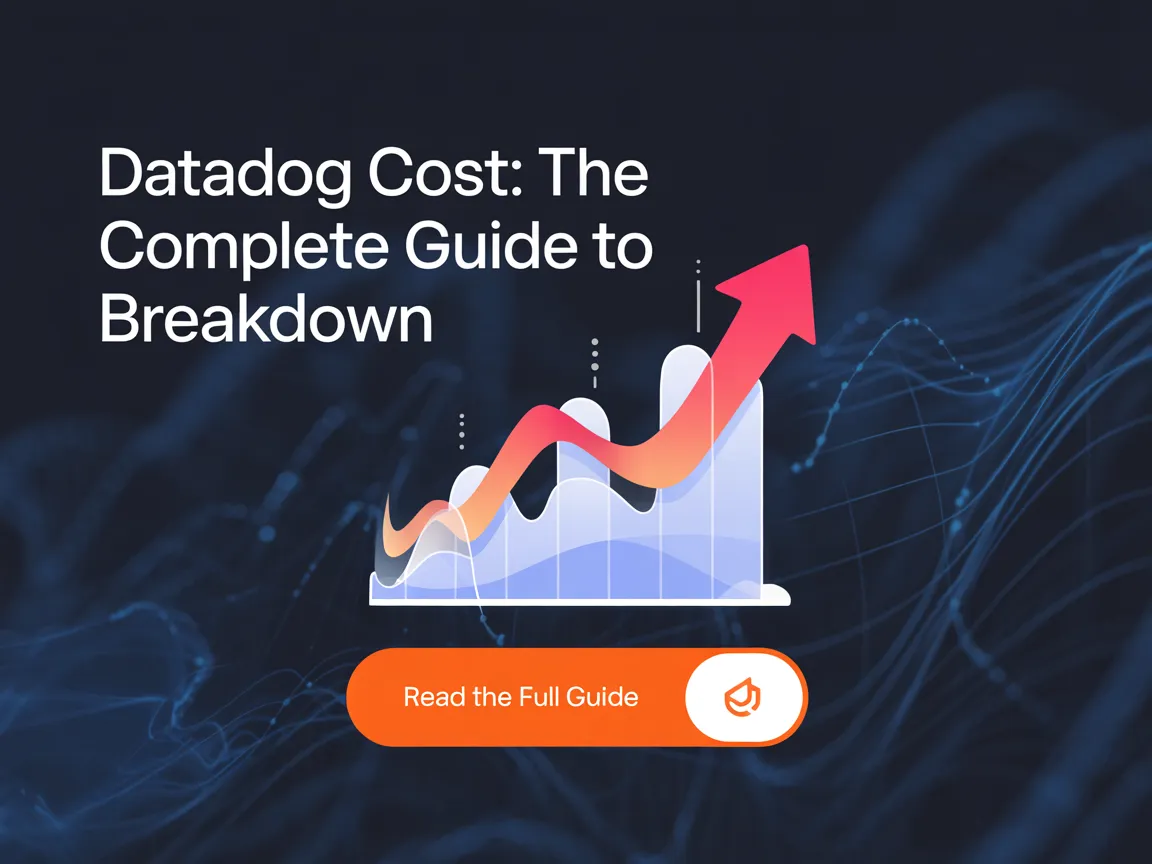
If you’re trying to understand Datadog pricing and how the Datadog platform charges for its services, you’re in the right place. Whether you’re searching for “Datadog cost per host”, trying to calculate synthetic monitoring expenses, or just want to avoid a surprise bill, this guide will help you understand how Datadog charges really work and how to control them. Datadog’s pricing is calculated based on actual usage, providing transparency and flexibility to cater to varying customer needs.
What is Datadog?
Datadog is a cloud-native observability platform that helps you monitor applications, infrastructure, logs, security, and real user behaviour in real time. It also provides robust monitoring for cloud applications, enhancing observability and infrastructure optimisation. It’s trusted by engineering, DevOps, and SRE teams around the world to provide complete visibility across distributed systems.
Key features include:
- Infrastructure monitoring
- Application performance monitoring (APM)
- Log management
- Real user monitoring (RUM)
- Synthetic monitoring
- Continuous profiler
- Custom metrics
Understanding the cost structures of different Datadog products, such as custom metrics and container monitoring, is crucial for managing expenses effectively.
Datadog integrates with over 600 services, including AWS, Azure, GCP, Docker, Kubernetes, PostgreSQL, and more.
Datadog Pricing Overview
Datadog's pricing is modular and usage-based. Instead of one flat fee, you pay for what you use across multiple categories:
Service | Starting Price | Billing Model |
|---|---|---|
Infrastructure Monitoring | $15 per host per month | Per host |
APM + Continuous Profiler | $31 per host per month | Per host |
Log Management | $0.10 per GB | Uncompressed data ingested |
Synthetic Monitoring | $7.20 per 10,000 tests | Per test run |
RUM | $1.50 per 1,000 sessions | Per session volume |
Custom Metrics | $5 per 100 metrics/month | Per usage volume |
The Datadog pricing model includes various components such as data volume and different features, which impact overall costs. Understanding these complexities and the variety of plans tailored to different needs is crucial to optimise Datadog expenses effectively.
There is no flat monthly plan. This means your Datadog cost will vary based on the services you enable, how frequently they are used, and how much data you ingest or retain. Understanding these pricing models is crucial for effective budgeting and optimisation.
What Impacts Your Datadog Costs Per Month?
Several key factors will affect how much you pay for Datadog each month:
- Number of monitored hosts: You’re billed per host per month.
- Synthetic monitoring frequency: Frequent uptime checks increase costs.
- Uncompressed data ingested: Data used for logs, metrics, and traces is charged based on size before compression.
- Datadog custom metrics: These are additional charges and can become expensive fast. The billable count for custom metrics and hosts is calculated by assessing distinct metric usage over time.
- Retention periods: Storing logs or traces for longer than default periods costs more.
- High water mark pricing: Some services use your peak usage, not your average.
Understanding these pricing levers is essential if you want to control Datadog costs.
Application Performance Monitoring
Application Performance Monitoring (APM) is a crucial aspect of ensuring optimal performance and reliability in cloud-scale applications. Datadog’s APM solution provides end-to-end distributed traces and service health metrics to resolve issues faster. With automatic service discovery and dependency mapping (Universal Service Monitoring), users can gain a deeper understanding of their application’s performance. Datadog’s APM solution also offers 15-minute live trace search and analytics, as well as 15-day historical search and analytics. Additionally, RED metrics based on 100% of traffic with 15-month retention are provided, allowing users to correlate traces with metrics, logs, processes, network data, and more. Datadog’s APM solution is billed annually or on-demand at $36, making it a cost-effective option for businesses. Furthermore, Datadog’s APM Enterprise solution includes Continuous Profiler, which provides code-level tracing, including wall, lock, CPU, and I/O time, enabling users to optimise their application’s performance and reduce costs.
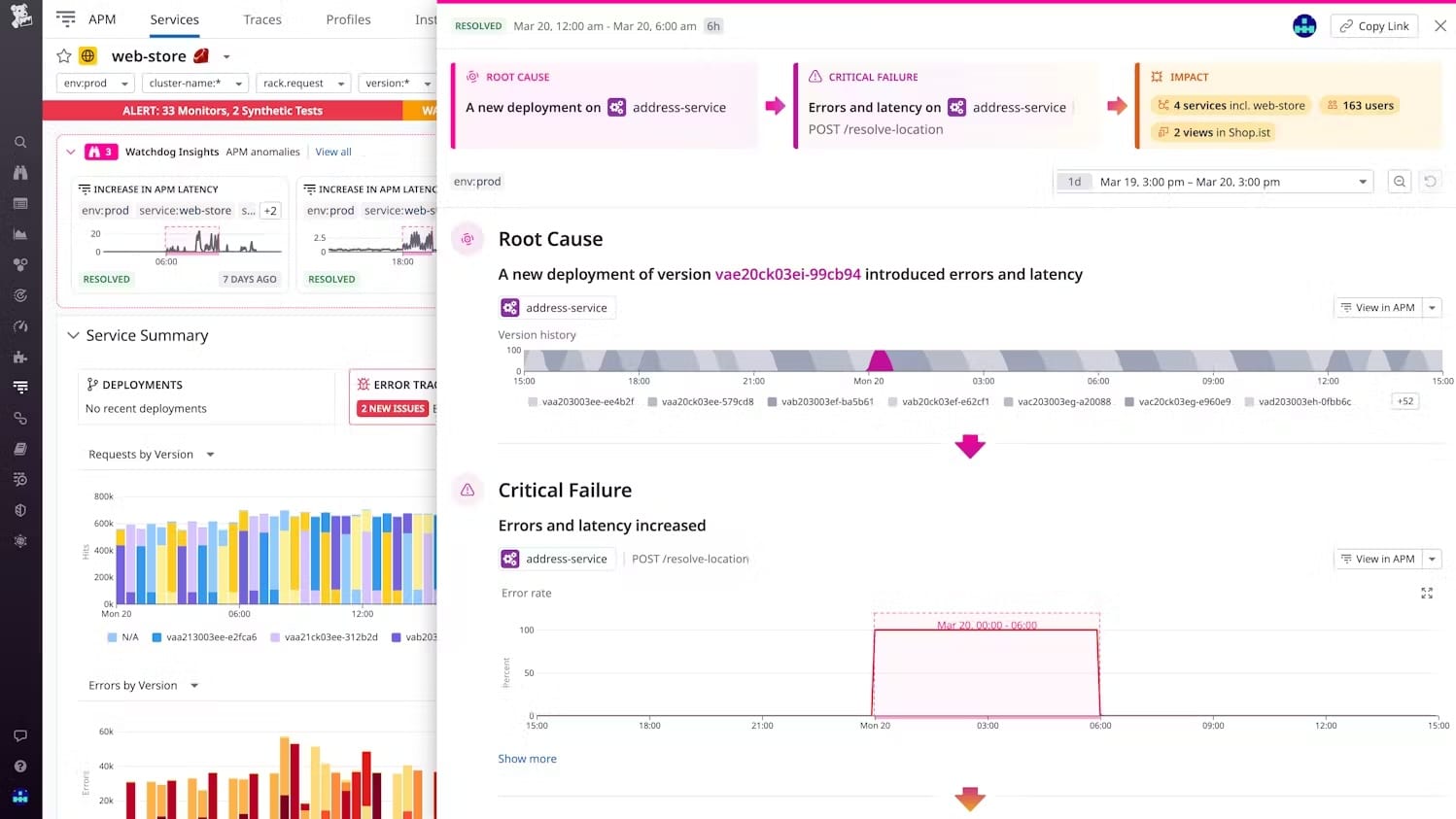
Database and Infrastructure Monitoring
Database and infrastructure monitoring are essential components of Datadog’s services, providing users with a comprehensive understanding of their system’s performance. Datadog’s database monitoring solution offers advanced features such as query analytics, database performance monitoring, and alerting. With Datadog’s infrastructure monitoring, users can monitor their hosts, containers, and serverless functions, gaining insights into their system’s health and performance. Datadog’s infrastructure monitoring also provides features such as automatic service discovery, dependency mapping, and anomaly detection, enabling users to identify and resolve issues quickly. Additionally, Datadog’s enterprise infrastructure monitoring solution provides advanced features such as continuous testing, synthetic monitoring, and compliance frameworks, ensuring that businesses can maintain optimal performance and security. Datadog charges based on the number of hosts, with prices starting at $15 per host per month, making it a cost-effective option for businesses of all sizes.
Advanced Features
Datadog offers a range of advanced features to help businesses optimise their application’s performance and security. One of the key features is custom metrics, which allows users to create custom metrics and dashboards to gain deeper insights into their application’s performance. Datadog’s custom metrics solution provides features such as metric-level ingestion controls, enabling users to control their metrics and reduce costs. Additionally, Datadog’s log management solution provides features such as log data scanning, indexing, and retention, enabling users to manage their log data effectively. Datadog’s security platform also provides advanced features such as sensitive data detection, compliance frameworks, and incident management, ensuring that businesses can maintain optimal security and compliance. With Datadog’s advanced features, businesses can gain a comprehensive understanding of their application’s performance and security, enabling them to make data-driven decisions and optimise their operations. Datadog’s pricing model is based on actual usage, with prices starting at $1.27 per million log events per month, making it a cost-effective option for businesses of all sizes.
Real-World Cost Examples
Example: Small Tech Startup (5 hosts)
- Infrastructure monitoring: 5 × $15 = $75
- APM: 5 × $31 = $155
- Logs: 50 GB × $0.10 = $5
- Synthetic tests: $7 (10k runs)
- Custom metrics: $5
- Estimated Total: ~$247 per month
To calculate the monthly average for custom metrics billing, sum the distinct custom metrics over each hour in a month and divide that sum by the total number of hours.
Example: Mid-Sized SaaS (20 hosts)
- Infra + APM: 20 × ($15 + $31) = $920
- Logs: 300 GB = $30
- Synthetic monitoring: $21 (30k runs)
- RUM: $9 (6k sessions)
- Custom metrics: $15
- Estimated Total: ~$995 per month
As you scale, Datadog pricing can increase, but with the right setup, it can also replace multiple other tools.
Hidden Costs You Should Know About
While Datadog publishes base pricing, many customers are caught off guard by additional charges. Understanding observability costs is crucial as they can quickly escalate due to factors like data volume and feature usage. Here’s what to look out for:
- Custom metrics overages: These aren’t capped automatically.
- Verbose logging: High-volume logs (e.g., debug) can spike ingestion volume and increase costs.
- High retention: Choosing 30- or 90-day retention adds storage costs.
- Synthetic test sprawl: Many teams accidentally create redundant checks.
- RUM session replay: This is billed separately from basic RUM.
Understanding infrastructure metrics is crucial as they integrate with various data types, such as logs and network data, to provide comprehensive insights. This capability enhances the ability to troubleshoot and optimise system performance effectively.
Costs are often calculated using the maximum count during a billing period, not your average usage.
Tips for Reducing Datadog Charges
Smart teams actively manage Datadog costs by:
- Setting log retention to 7–15 days unless more is needed
- Excluding unnecessary logs and applying filters before ingestion
- Using standard indexing over high-performance where possible
- Limiting synthetic test frequency and geographic coverage
- Cleaning up custom metrics and removing unused dashboards
- Monitoring cost metrics weekly in the Datadog usage dashboard
Datadog offers various pricing plans to accommodate diverse customer requirements.
It is important to consider the financial implications of indexed logs, as users are charged for the indexing of logs sent to the platform, regardless of whether those logs are actively accessed or utilised. This can lead to significant costs for data that might go unused.
Datadog’s integrated platform provides comprehensive log monitoring features that streamline the correlation of logs with full operational context.
Some companies report saving over 40% by simply controlling what they ingest.
Actionable Insights
Actionable insights are crucial for optimising Datadog costs and enhancing application performance. By leveraging Datadog’s pricing model and custom metrics, users can gain deeper insights into their infrastructure monitoring and application performance monitoring (APM) data. This enables them to identify areas of improvement, optimise resource allocation, and reduce costs effectively.
For instance, analysing log data can help detect anomalies and identify trends, allowing users to optimise their log retention period and minimise costs. Datadog’s continuous profiler offers code-level tracing, providing detailed insights into code performance. This enables users to pinpoint inefficient code segments and optimise them, leading to reduced resource consumption and lower costs.
By leveraging these actionable insights, users can make data-driven decisions to enhance their application performance and optimise their Datadog pricing. This approach not only improves operational efficiency but also ensures that resources are allocated effectively, leading to significant cost savings.
Continuous Testing
Continuous testing is an essential aspect of ensuring optimal performance and reliability in cloud-scale applications. Datadog’s synthetic monitoring and APM solutions provide end-to-end visibility into application performance, enabling users to identify issues and optimise their applications proactively.
By integrating continuous testing into their development workflow, users can ensure that their applications meet the required standards of performance, security, and reliability. Datadog’s pricing model supports continuous testing by offering a cost-effective solution for synthetic tests, with pricing based on actual usage. Users can run synthetic tests on-demand or schedule them to run at regular intervals, ensuring that their applications are always performing optimally.
With Datadog’s continuous testing capabilities, users can reduce the risk of errors, improve application reliability, and optimise their Datadog costs. This proactive approach to testing ensures that applications remain robust and performant, ultimately leading to a better user experience and reduced operational costs.
Is Datadog Worth the Price?
Datadog is more expensive than open-source options, but it provides value for teams who need:
- End-to-end visibility across complex environments
- Real-time alerts and rapid incident resolution
- Integration with CI/CD pipelines and Kubernetes
- Dashboards that unite metrics, logs, and traces
When comparing Datadog’s services, it’s clear that their extensive range of monitoring and security features offers significant advantages, though the pricing model can be challenging for some.
If you don’t monitor usage, Datadog pricing can get out of hand. But if you manage it properly, it replaces the need for multiple tools, reduces outages, and helps scale operations cleanly. Datadog’s error tracking capabilities are essential for comprehensive performance metrics and improved debugging.
Final Verdict: Is Datadog Worth It for You?
Datadog offers one of the most comprehensive monitoring stacks available today. It brings together data from across your stack into one place and gives you the tools to detect, debug, and resolve issues faster. Datadog’s custom pricing structure can be complex, but it offers flexibility to cater to specific metrics and usage patterns.
But its pricing isn’t for the faint of heart. If you enable every feature without oversight, your monthly bill can balloon fast. That’s why teams that get the most out of Datadog do three things:
- Start small: only enable what you need
- Audit usage monthly: monitor your per-host and per-service spend
- Set limits: on retention, ingestion, and synthetic monitoring
Various factors influence Datadog’s pricing evaluation, including the number of hosts, data retention policies, and the extent of feature usage. Considering these factors can provide better insights into the overall cost structure and help address customer concerns related to billing and support systems. Synthetic monitoring simulates user interactions with applications, helping businesses proactively address issues and enhance user experiences.
Used correctly, Datadog doesn’t just cost money, it helps you save it by avoiding downtime and scaling smarter.
FAQs on Datadog Pricing
What is Datadog’s cost per host per month?
$15 for infrastructure, $31 with APM and profiler.
What’s the real cost of log ingestion?
$0.10 per GB of uncompressed data ingested. A single verbose service can generate gigabytes daily.
Does Datadog offer flat-rate pricing?
No. Enterprise deals offer volume discounts, but most pricing is usage-based.
Can I use Datadog for free?
Only for a 14-day trial. No permanent free tier exists.
What are the most common overages?
Custom metrics, high-frequency synthetic tests, and excessive log retention. On-demand pricing can lead to significantly higher costs, particularly in usage-based products like logs and synthetic checks, where users are billed beyond their committed volumes, potentially increasing their expenses unexpectedly.


